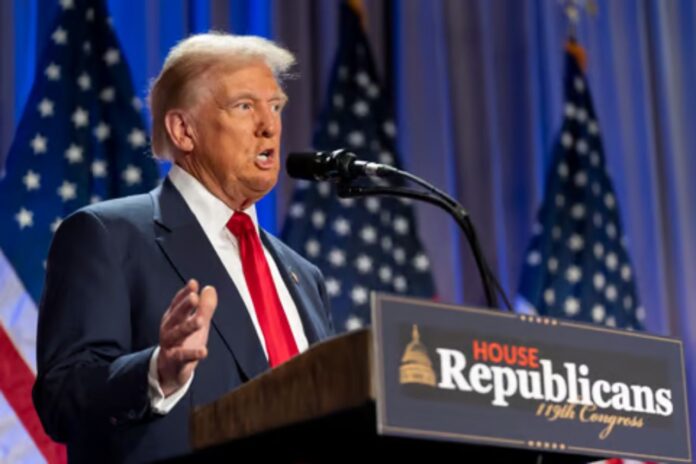Donald Trump used tariffs—taxes on foreign goods—during his first time as president, but their impact on the economy wasn’t as huge as expected. While some industries felt the effects, the overall economy didn’t change much, and the factory jobs he promised didn’t materialize as hoped.
Now, as he prepares for his next term, Trump is talking about using tariffs in a bigger way. This time, his plan could bring more uncertainty about what will happen, especially since he’s hinting at much larger tariffs.
For example, he recently posted on social media that, on his first day back in office, he would impose a 25% tariff on all goods coming from Mexico and Canada unless those countries take steps to stop illegal immigration and drugs like fentanyl from entering the U.S. If that happens, it could completely shake up the trade deal between the U.S., Mexico, and Canada.
Trump also said China would face an extra 10% tariff on imports until China takes action to stop making materials used for fentanyl.
Democrats and business groups are worried about what these threats might mean for everyday prices. They fear that tariffs could lead to higher prices for cars, shoes, groceries, and housing. Some Democrats in Congress have already introduced a bill to make it harder for a president to slap on tariffs without approval, but with Republicans set to control the House and Senate, it might not go far.
Trump’s use of tariffs isn’t as controversial as it once was. Even President Biden, a Democrat, kept some of Trump’s tariffs in place and expanded them, especially on China. Officials even looked at removing them to help with inflation but found it wouldn’t make much difference.
During Trump’s first term, his tariffs on things like washing machines, steel, and aluminum led to some price increases, but they didn’t do much to bring back factory jobs. Still, his tariffs on China led many U.S. companies to look for suppliers in other countries, and they sparked a trade war that hurt some industries, even though it didn’t deliver the promised economic benefits.
Despite collecting billions in tariff money, the impact on the U.S. economy as a whole was small. The country’s total economy is now worth $29 trillion, so the tariff money was less than 0.3% of that.
Now, Trump is proposing much larger tariffs, which could result in $266 billion in tariff collections if Mexico, Canada, and China are included. But if that happens, the cost will likely be passed on to U.S. families, businesses, and even foreign companies, meaning we could all see higher prices or lower profits.
Former officials from the Biden administration are worried that companies could use Trump’s tariffs as an excuse to raise their prices. It would be similar to how many companies raised prices in 2022, using the Russia-Ukraine war as a cover for price hikes.
What’s unclear is when or how Trump might back down on his tariffs if his goals are met. Right now, his tariff threats are creating more confusion and uncertainty as people wait to see what’s actually going to happen.
“We know Trump’s main goals, but we’re not sure how or when he’ll act on them,” said Greg Daco, an economist at EY-Parthenon.
